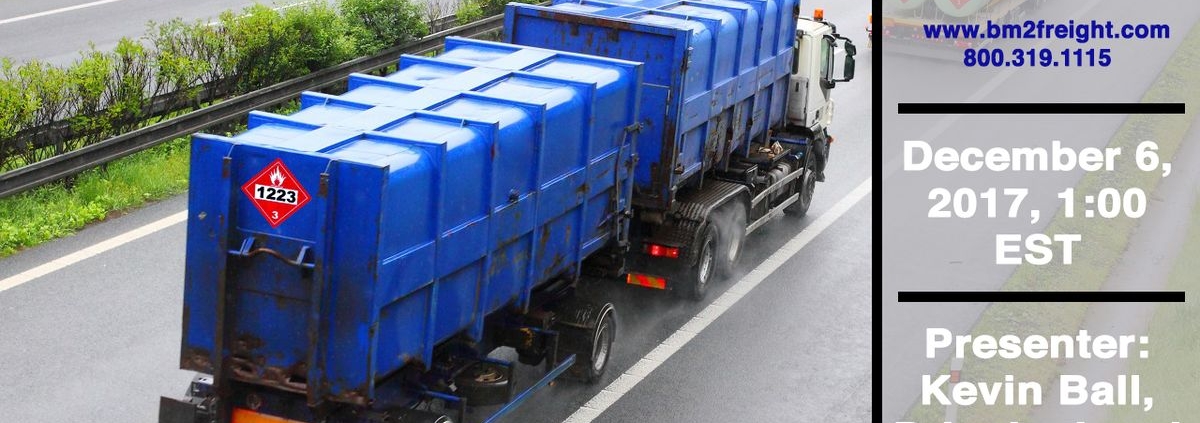Hazmat Carrier Crunch: Finding Capacity & Sanity In A Tight Market
Kevin Ball Shares Educational Webinar
BM2 Freight moves hundreds of hazmat loads every month and Kevin Ball has personally led the development of the hazmat transportation specialization. He has spearheaded hazmat carrier development for BM2 Freight and on December 6, 2017, he offered an educational webinar on the topic. The full webinar is available below; here is a brief synopsis of the highlights.
Hazmat Definitions and Market Overview
There are a number of government organizations that designate hazardous materials; the EPA (Environmental Protection Agency), OSHA (Occupational Safety and Health Administration), the NRC (Nuclear Regulatory Commission), and the DOT (Department of Transportation). These designations may be overlapping. The DOT specifies nine different classes of hazardous materials, from explosives and fuels to water- or air-reactive chemicals. Each class has a particular symbol that must be displayed on all sides of the vehicle transporting it. The vast majority of all hazardous materials are transported via U.S. highways; almost 1 out of every 5 trucks on the road is hauling hazmat. This is an industry where efficiency and safety must be prioritized equally.
Hazmat Carrier Crunch
Currently, there is a contraction in the hazmat carrier population. Shippers, brokers, and 3PLs are having difficulty finding drivers, trucks or carriers. Sometimes they are unable to support shippers’ timing. There are dropped loads and price volatility. There is an overall carrier crunch that is even more pronounced in hazmat transportation. Economically, a stronger economy equals more shipments and paradoxically, fewer drivers. Some drivers who entered the field when construction or other industries experienced decline are now returning to previous jobs. Aging drivers are not being replaced by younger drivers who no longer perceive the lifestyle of the “open road” as attractive. While marijuana is now legal in a number of states, failing a random drug test means loss of your CDL. And with more and more FMCSA regulations (ELD) constraining choices, that will continue. Hazmat drivers require additional qualifications (hazmat training and tanker endorsement) and with the current shortage of drivers, there is little incentive for drivers to pursue those extra requirements.
Finding Capacity & Sanity
The most important way to increase capacity is to cultivate carrier relationships. Respect, communication, and cooperation are key. Having a 3PL that specializes in hazmat means that the carriers and drivers have someone who speaks their language, who understands their concerns. It is essential to demonstrate a genuine concern for their interests. On-time payments, options for quick pay, the ability to provide backhauls—these are some ways for the broker or 3PL to grow and maintain a large carrier base. And nothing beats volume. The greater number of hazmat loads a broker or 3PL has, the greater the ability to offer the kind of treatment that hazmat carriers need. If a broker or 3PL can give advance notice of hazmat shipments, and manage the changing regulatory climate particular to hazmat transportation, carriers and drivers can plan without worry. The broker or 3PL that has established procedures and can work in genuine partnership with the carriers and drivers will be most successful in increasing its hazmat carrier network.
At BM2 Freight, We Connect Great Shippers With Great Carriers
For the whole webinar, including the questions and answers, click here.





Leave a Reply
Want to join the discussion?Feel free to contribute!